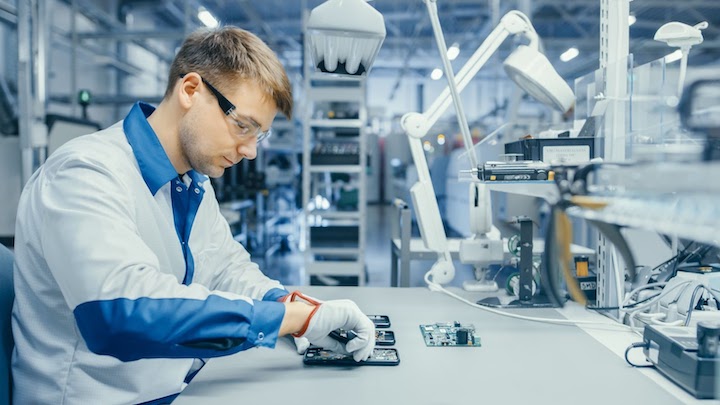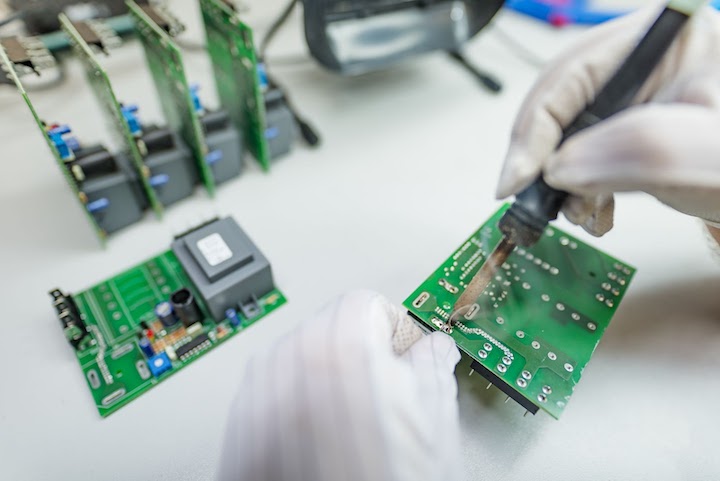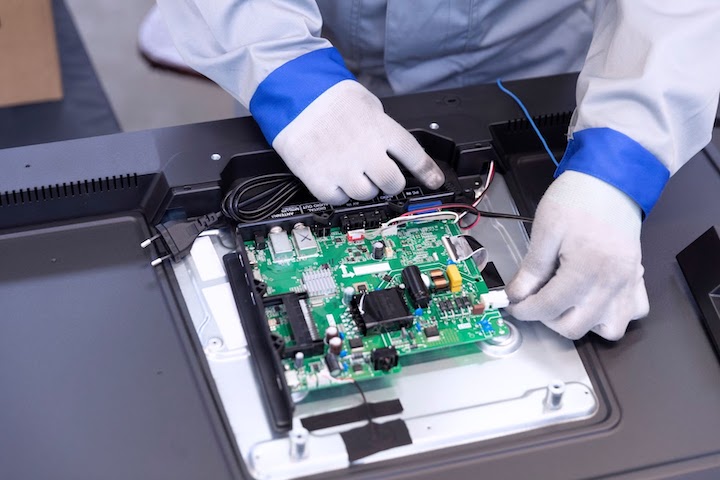Time to read: 4 min
Designing complex PCBAs for external enclosures requires meticulous attention to detail, ensuring compatibility between both mechanical and electrical aspects. In this article, we’ll discuss the importance of this integration and common problems that often arise during the process, then provide ways to avoid them.
Why MCAD and ECAD Integration is Important
Electronics and mechanical systems are highly interdependent and require complex interactions to function. So, integrating MCAD (mechanical computer-aided design) and ECAD (electronic computer-aided design) in the design process is crucial to ensure that a product’s electronic components will fit properly within the external mechanical enclosure. In some cases, teams design electrical and mechanical systems separately, which results in validation gaps and manufacturing problems. This approach can lead to interference between the enclosure’s mechanical and electrical designs.

By integrating mechanical computer-aided design (MCAD) and electronic computer-aided design (ECAD), you can simulate the product design virtually, and take into account the mechanical, electrical, and thermal aspects. This enables you to identify and address issues early in the design process and create a more robust and optimized end product.
As an example, when designing a PCBA, you need to consider the enclosure size and shape, the location of other components, and the thermal dissipation requirements of electronic components. Additionally, the PCBA layout must be optimized for signal integrity and manufacturing efficiency. By using MCAD and ECAD, you can model the PCBA within the enclosure in 3D to ensure all of these requirements are met.
You also need to ensure that the enclosure provides adequate thermal management while accommodating the PCBA and other mechanical components. You can accomplish this goal by modeling the enclosure in 3D and checking for interferences and clearance issues with the PCBA.
Integrating MCAD and ECAD is essential for designing complex electronic products that meet performance, reliability, and manufacturability requirements. By collaborating closely
and performing virtual simulations, you can reduce development time, costs, and risks while improving product quality and customer satisfaction.

Common Integration Problems
When designing electrical components, it’s easy to overlook the mechanical aspects of system design. But doing so can result in improper component placement and prevent the PCBA from fitting inside the enclosure. This is a common issue when electrical and mechanical teams don’t coordinate during the design process, and the result is last-minute changes that cost time and money.
These are the common issues to look out for when integrating MCAD and ECAD designs:
- Interference issues: Interference between electrical components and mechanical structures happens when the two design processes are carried out independently, and the final designs are not checked against each other to ensure a proper fit.
- Thermal management issues: The mechanical environment in which electronic components are installed can affect their thermal properties. Without integrated electrical and mechanical designs, it’s challenging to predict and manage thermal properties. This can result in overheating, other thermal-related performance issues, or component failure.
- Manufacturing issues: Improper integration between electrical and mechanical designs can lead to incorrect component or drill hole placement. These issues can affect the quality of the finished product, and lead to costly rework or scrap if not caught early.
- Communication issues: Lack of integration between electrical and mechanical design teams increases the likelihood of miscommunication, misunderstandings, and delays in the design process.

Ways to Avoid These Problems
To avoid MCAD and ECAD design integration problems, design the electrical design and MCAD enclosure together, rather than as separate entities. By developing the mechanical and electrical designs in parallel with collaborative communication between the two teams, you will achieve a better overall design.
The use of simulation tools can also help you avoid these problems and ensure that the PCBA fits perfectly within the enclosure — 3D modeling software lets you visualize the physical dimensions of the enclosure and the electrical components together so you can identify any points of interference.
Using standardized design rules is also helpful because doing so ensures that the components are designed to fit within the enclosure. This also eliminates the need for expensive and time consuming modifications and redesigns.

Here are some other best practices that will help you avoid common problems that arise when integrating MCAD and ECAD designs:
- Foster collaboration: To ensure a successful product, close collaboration between mechanical and electrical teams is crucial. Regular meetings and clear communication will help ensure that the mechanical and electrical designs are in sync.
- Review the design: Before finalizing the design, it’s important to review it thoroughly to ensure that all aspects of the design are accounted for. This includes ensuring that the PCBA will fit properly in the mechanical enclosure, that all components will fit as expected, and that the PCBA will be properly secured within the enclosure.
- Use 3D modeling software: 3D modeling software simulates the interaction between the mechanical and electrical components, which illuminates potential conflicts before manufacturing begins.
- Design for manufacturability (DFM): When designing the product, it’s important to keep the manufacturing process in mind. Designing for manufacturability reduces the risk of manufacturing issues and costs associated with manufacturing. DFM also accounts for ease of assembly, testing, and serviceability of the product.
By implementing these best practices, you can ensure a successful integration of your MCAD and ECAD designs, to get a product that meets both mechanical and electrical requirements.
Conclusion
The integration of MCAD and ECAD is crucial for a successful system design, and the importance of designing the electrical components to fit within their enclosure cannot be overstated. By ensuring that both mechanical and electrical designs are developed in parallel, using simulation tools, and adhering to industry-standard design rules, you can avoid common problems and create a high-quality product that meets its intended performance requirements. Integrating and collaborating effectively will help you build high-performance, reliable systems that meet their specifications and improve overall system functionality. Learn more about how MacroFab can help you overcome common PCBA design challenges.
Create an account and check out our CNC machining services to leverage our network of highly skilled CNC machining partners to turn your vision into reality!










